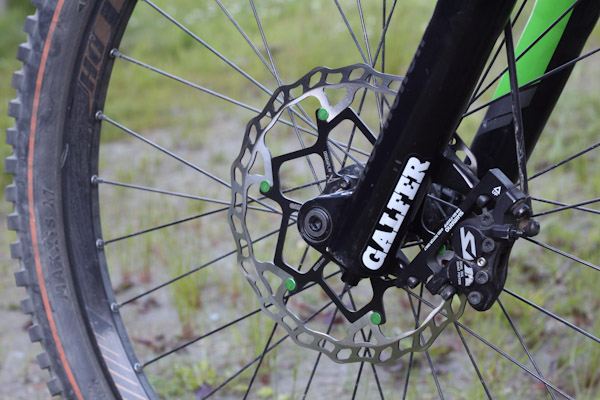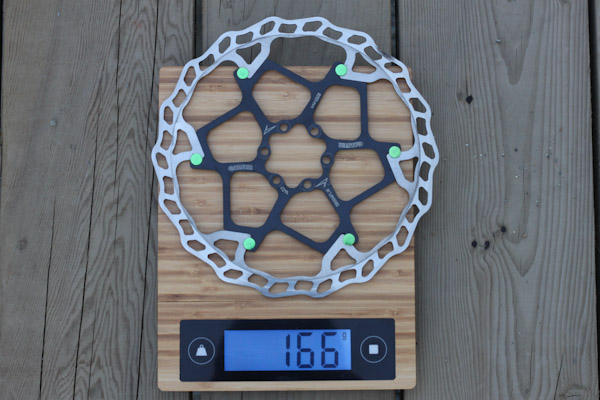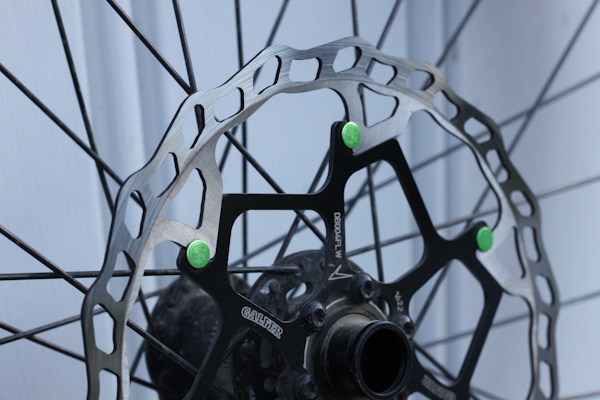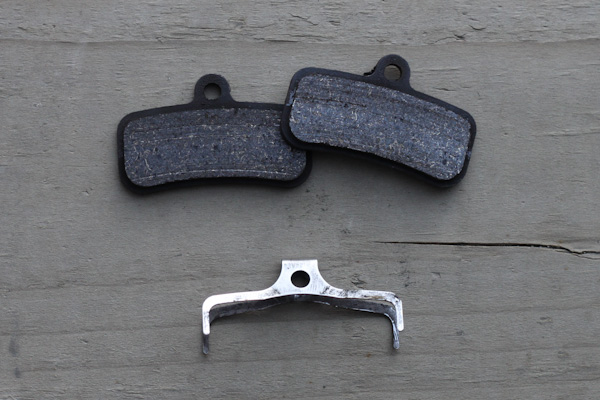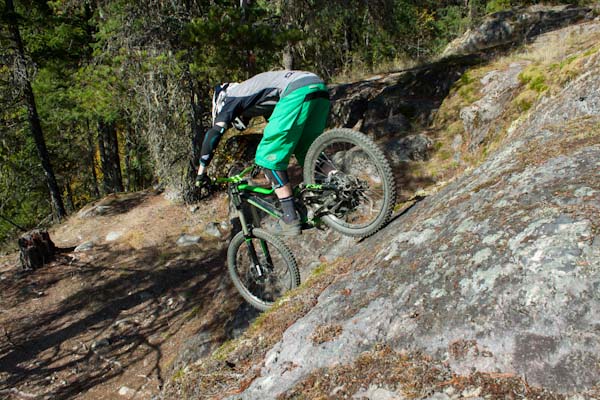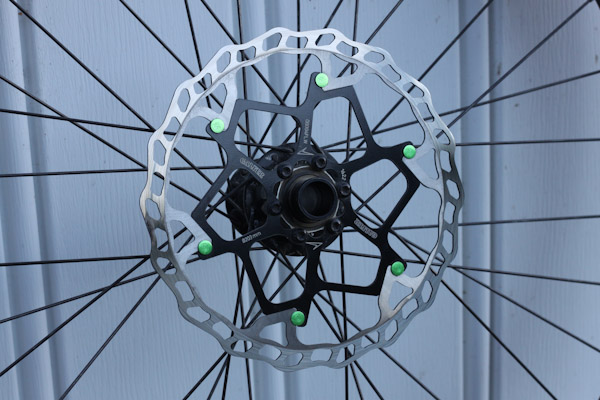Unless you’re a new-school BMX rider (brakeless), having good brakes is probably a high priority! Though I joke about being a small guy with little heft to halt, I still like my brakes to bite hard. I was stoked to set up my DH bike with some parts from Galfer USA, which is an off shoot of the original Spanish brand best known for their motocross components.
Last summer, I installed their 203mm Floating Wave rotor and brake pads and hit the Whistler Bike Park to see how they handled the speeds, the steeps, and the slabs. In short, Galfer’s components did what good brakes do – they provided a lot of braking power without sacrificing modulation.
I’ll definitely be keeping their components on my DH bike, since the subtle buzz of the rotor doesn’t bother me…
Galfer’s 203mm Floating Wave rotor weighs in at 166g (180mm versions are also available). If you’re not familiar, pinning the outer ring to the inner spider is what makes this a ‘floating’ design. The company claims their floating rotor reduces drag, provides better feel and resists warping. They also say they have the best stainless steel braking surface out there, and that their design keeps temperatures down by allowing air to flow over the entire brake pad surface.
Before I installed the rotor a moto-riding friend of mine warned me that the pins could loosen up and create a vibration under braking. Sure enough, after a few weeks I found the floating rotor was creating an audible buzz and a subtle but detectable loose feel under braking. This might annoy some people, but I found it easy to tolerate the quiet buzz and slight vibration in exchange for the rotor’s great stopping performance.
Throughout my all-downhill testing I never managed to heat the rotor up to the point of weakness, let alone failure of the brakes. I don’t recall smashing it on any rocks, but the rotor is still running dead straight so it hasn’t warped under hard braking or by overheating.
I installed Galfer’s standard type brake pads first. These pads took the better part of a day (and a good number of runs in the bike park) to bed in on the brand new rotor, but by the time I went home they were grabbing with promise. After testing for a while, I wound up impressed with the stopping power these pads provided.
At the same time, Galfer’s standard pads still offered good modulation. On slippery rock slabs or dusty chutes it was easy to find the sweet spot and keep things under control. When you need to stop on a dime however, a good squeeze of the levers will reel you in quickly. After about 15 days of mostly bike park use the standard pads are just getting broken in, with hardly any wear to show.
Recently I installed the Pro pads and noticed one big difference – as Galfer intends, they stopped surprisingly well right out of the package and took very little time to bed in. After slapping them in, they immediately felt like they were halfway broken in already. In the bike park, it only took two runs for the Pro pads to start grabbing with full authority.
After a few days I found the Pro pads were giving me gobs of power yet great modulation too. Galfer claims they are stronger and have better fade resistance than the standard type, but will wear out a bit faster. I didn’t notice a huge difference in power over the standard type, but that’s OK since the standard pads are pretty impressive themselves.
All in all, Galfer’s components have performed very well, offering a hard bite when the need arises, but steady feathering when a light touch will do. Furthermore, between both sets of pads ridden in all kinds of weather I never had any issues with annoying honking or squealing.
I’ve had no problems with excess wear and tear on the pads or rotor, so these parts have become a welcome upgrade to my DH rig. Galfer’s pads are definitely an upgrade to consider for anyone – as for the rotor, if you can get used to feeling and hearing a slight buzz the braking performance is great.
